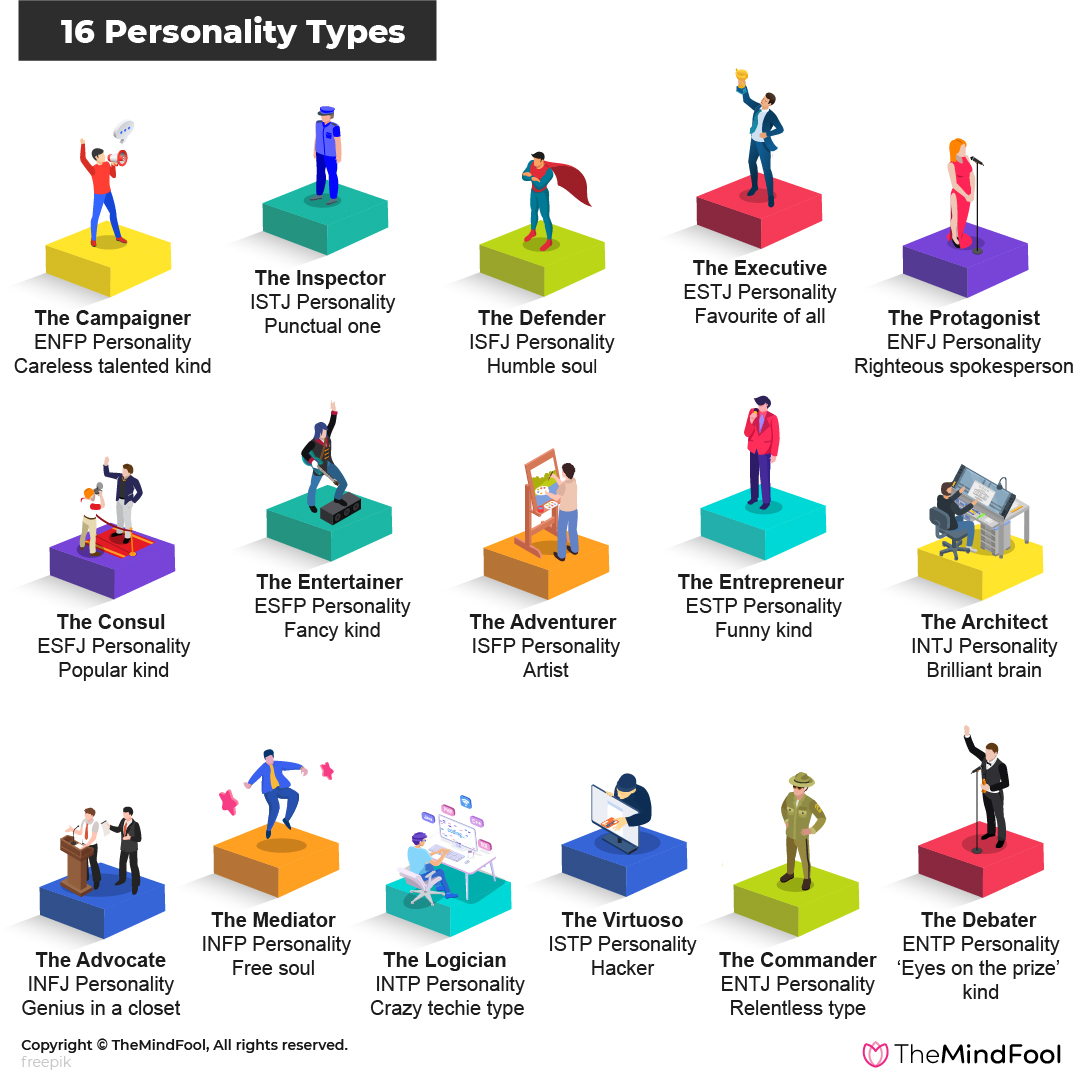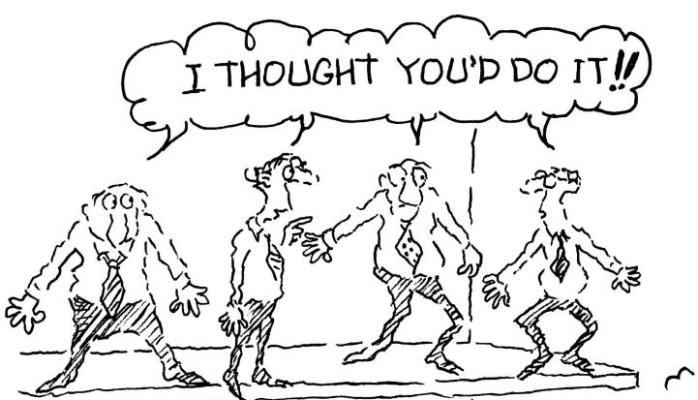Introduction to Personality Psychology and Theories
1/81
There's no tags or description
Looks like no tags are added yet.
Name | Mastery | Learn | Test | Matching | Spaced |
|---|
No study sessions yet.
82 Terms
Personality
The characteristic patterns of thinking, feeling, and behaving that make a person unique.
Personality Psychology
The scientific study of personality and how it influences people's behaviors, thoughts, and emotions.
Four Humors Theory
A theory proposed by Galen and Hippocrates stating that personality resulted from balances or imbalances of bodily fluids: blood (sanguine, optimistic), yellow bile (choleric, irritable), black bile (melancholic, depressed), and phlegm (phlegmatic, calm).
Psychoanalytic Theory
A theory by Freud that states personality is shaped by unconscious drives and early childhood experiences, especially related to sex and aggression.
Id
The primitive, instinctual drives that operate on the pleasure principle.
Superego
The moral conscience that internalizes societal rules.
Ego
The rational part that mediates between the id, superego, and reality, operating on the reality principle.
Repression
The act of pushing threatening thoughts out of conscious awareness.
Defense Mechanisms
Unconscious strategies the ego uses to manage anxiety, such as denial, projection, and rationalization.
Psychoanalytic Therapy
Therapy that shows mixed results; some evidence for effectiveness, but generally less empirically supported compared to newer therapies like cognitive-behavioral therapy.
Literary Truth
Narrative truth that feels meaningful or relatable even if not scientifically verified.
Empirical Truth
Truth that is verifiable by observation or experiment; objective and scientifically supported.
Erik Erikson
>A psychologist known for expanding Freud's ideas and for his psychosocial stages of development (e.g., trust vs. mistrust, identity vs. role confusion).
>Emphasis on social relationships across the lifespan.
Humanistic Theory
A theory stating that people are inherently good, motivated by a drive for personal growth, and strive for self-actualization.
Core Ideas of Humanistic Theory
Include free will, self-concept, and the importance of personal experience.
Carl Rogers
Known for the theory of self-concept and unconditional positive regard; developed client-centered therapy.
Abraham Maslow
Known for Maslow's hierarchy of needs and the idea of self-actualization as the pinnacle of human motivation.
Idiographic Approach
Studying individuals in depth through case studies, focusing on uniqueness.
Nomothetic Approach
Studying large groups to find general laws or traits that apply broadly.
Personality Trait
A stable, enduring characteristic or pattern of behavior, thought, or emotion.
Core Elements of Trait Perspective
Traits are relatively stable across time and situations, can be measured, and predict behaviors.
Normally Distributed Traits
The idea that most people fall near the average on traits, with fewer people at the extremes (high or low).
Lexical Hypothesis
The idea that important traits are more likely to be encoded into language; the more important a trait, the more likely it is to have multiple words describing it.
Gordon Allport
A psychologist who identified thousands of traits by combing through dictionaries.
Raymond Cattell
A psychologist who studied personality and contributed to the trait perspective. 16 personality factors, factor analysis.

Factor Analysis
A statistical method that identifies clusters of correlated traits to find underlying dimensions of personality.
Big Five
A model of five major dimensions of personality: Openness, Conscientiousness, Extraversion, Agreeableness, Neuroticism.
Extraversion (High)
Outgoing, energetic.
Extraversion (Low)
Reserved, quiet.
Agreeableness (High)
Trusting, kind.
Agreeableness (Low)
Suspicious, antagonistic.
Conscientiousness (High)
Organized, dependable.
Conscientiousness (Low)
Careless, impulsive.
Neuroticism (High)
Anxious, emotional.
Neuroticism (Low)
Calm, stable.
Openness (High)
Creative, open-minded.
Openness (Low)
Conventional, prefers routine.
Core Traits of the Big Five
They are broad, stable across cultures and time, and can predict a wide range of behaviors and life outcomes.
Reliability
Consistency of the measure (e.g., getting similar results over time).
Validity
Accuracy; whether the test measures what it claims to measure.
Concerns about Personality Traits
Mischel argued that behavior is often inconsistent across situations, so situations matter more than traits.
Critiques of the Trait Approach
Traits can be poor predictors of specific behaviors in specific situations; overemphasis on consistency; ignores situational influences.
Defenses of the Trait Approach
Traits predict average behavior over time; while behavior may vary in specific instances, overall patterns are stable and meaningful.
Cognitive Dissonance
The discomfort when holding conflicting beliefs or behaviors.
Festinger & Carlsmith Experiment
Showed that people who were paid $1 (vs. $20) to lie said they enjoyed a boring task more, because they had insufficient justification and thus changed their attitude to reduce dissonance.
Bystander Effect
Helping is heavily influenced by the situation, as shown in studies like Darley and Batson's 'Good Samaritan' study.
Importance of Personality Traits and Situation
Both matter: traits predict behavior in general, but specific situations can greatly influence whether a trait is expressed at a particular time.
Repression:
Pushing threatening thoughts into the unconscious.
What Does the Data Say About Psychoanalytic Therapy?
Mixed evidence:
Some benefits for long-term, complex psychological issues.
Criticized for being unfalsifiable, difficult to test, and not strongly supported by empirical data.
Modern therapy tends to favor evidence-based approaches like CBT.
4. What Does Psychoanalytic Theory Say About Personality?
Developed by Sigmund Freud.
Personality arises from unconscious conflicts, often rooted in childhood experiences.
Emphasizes:
Psychosexual stages of development.
Unconscious motives and internal conflicts.
Blood →
Sanguine: sociable, cheerful.
Phlegm →
Phlegmatic: calm, unemotional.
Black bile →
Melancholic: sad, analytical.
Yellow bile →
Choleric: irritable, ambitious.
Understanding Personality Traits
A personality trait is a stable, enduring characteristic that influences behavior, thought, and emotion.
Traits are measurable and can predict behaviors across different situations.
Darley and Batson's "Good Samaritan" Study:
Showed that situational factors (like being in a hurry) significantly influence helping behavior.
Psychoanalytic theory:
Focuses on unconscious drives and childhood experiences.
Humanistic theory:
Emphasizes personal growth and self-actualization.
Idiographic vs. Nomothetic:
Idiographic focuses on individual cases; Nomothetic focuses on general laws across groups.
What Might You Want to Know About a Potential New Roommate?
Are they neat or messy? (Conscientiousness)
Are they sociable or private? (Extraversion)
How do they handle stress or conflict? (Neuroticism)
Are they respectful of others? (Agreeableness)
Do they follow routines or seek novelty? (Openness)
✅ The idea: Understanding key personality traits can help predict compatibility and potential conflicts.
. How Might an Introvert and Extrovert Approach the Same Situation Differently?
Example: A loud party 🎉
Extrovert: Feels energized, engages with many people, seeks stimulation.
Introvert: May feel overwhelmed, prefer small group chats, might leave early.
🧠 This highlights the role of construal:
Construal
how a person interprets a situation.
The same environment can lead to very different behaviors depending on how it’s perceived.
according to Mischel, what are some concerns about focusing too much on personality traits in predicting behavior?
Mischel's Critique of Trait Theory
Walter Mischel argued that behavior is often inconsistent across different situations, suggesting situational factors may be more predictive than traits.
He emphasized the importance of context in understanding behavior.
Did Walter Mischel think features of the situation people are in, or their traits are more predictive of behavior?
features of the situation people are in
Critiques of the Trait Approach
Doesn’t explain why people behave the way they do.
Underestimates the role of the situation.
Can be too descriptive and not explanatory.
Traits may not be consistent across all contexts.
Defenses of the Trait Approach
Traits are relatively stable over time.
Useful for predicting general patterns, especially over the long term.
Big Five traits are supported by cross-cultural and genetic research.
Traits help explain average tendencies, even if individual behaviors vary situationally.
What Is Cognitive Dissonance?
A psychological state of mental discomfort caused by inconsistency between attitudes and behaviors.
>o get rid of the discomfort, your mind tries to fix the inconsistency — often by changing your attitude to match your behavior.
7. What Is Cognitive Dissonance?
A psychological state of mental discomfort caused by inconsistency between attitudes and behaviors.
🧪 Festinger & Carlsmith (1959) Study:
Participants did a boring task, then were asked to lie and say it was fun:
Paid $1 → changed their attitude to reduce dissonance (“maybe it was fun”).
Paid $20 → had a clear external reason, didn’t change attitude.
✅ Conclusion: People justify actions when they lack external motivation, showing attitudes can follow behavior.
The Role of Situations in Helping Behavior
Research shows that situational factors significantly influence helping behavior, as evidenced by the bystander effect.
Studies like Darley and Batson's 'Good Samaritan' study illustrate how urgency can affect the likelihood of helping, regardless of personality traits.
. What Does Research Show About Helping in Emergencies? 🧪 Example 1: Darley & Latané (1968) – Seizure Study
People were less likely to help when they believed others were present (bystander effect).
🧪 Example 2: Good Samaritan Study
Seminary students in a hurry were less likely to help someone in distress — even if they were about to give a talk on helping!
✅ Conclusion: Situational factors, like time pressure and presence of others, heavily influence helping behavior.
9. What Does Research Show About Personality Traits and the Situation?
Modern view: Traits and situations interact to shape behavior.
Traits predict behavior over time and across situations, especially when:
The trait is central to the person.
Situations are weak (fewer external cues).
Strong situations (e.g., fire alarms, job interviews) tend to reduce trait effects.
✅ Key Point: Both matter. Traits shape tendencies, but context shapes expression.
Sigmund Freud
🔹 Founder of psychoanalytic theory
Believed personality is shaped by unconscious conflicts, childhood experiences, and the interaction of the id, ego, and superego.
Introduced concepts like defense mechanisms, repression, and dream analysis.
Erik Erikson
🔹 Neo-Freudian and psychosocial theorist
Known for his 8 stages of psychosocial development, emphasizing how identity and social relationships evolve across the lifespan.
Expanded Freud’s ideas by focusing on lifespan development, not just childhood.
Carl Rogers
🔹 A humanistic psychologist
Believed in the inherent goodness of people and the importance of self-concept and unconditional positive regard.
Developed client-centered therapy, emphasizing empathy and the therapeutic relationship.
Abraham Maslow
🔹 A humanistic psychologist
Created Maslow’s Hierarchy of Needs, emphasizing the drive toward self-actualization.
Focused on motivation and human potential.
Galen & Hippocrates
🔹 Ancient Greek physicians/philosophers
Proposed one of the earliest personality theories: the four humors (blood, phlegm, black bile, yellow bile), which were believed to determine temperament.
Gordon Allport
🔹 Trait theorist
Distinguished between central, secondary, and cardinal traits.
Believed that traits were real and measurable, and emphasized individual uniqueness (idiographic approach).
Raymond Cattell
🔹 Used factor analysis to identify 16 basic personality traits.
Helped move psychology toward a scientific, data-driven study of personality.
Walter Mischel
Critic of trait theory and advocate for the power of the situation.
Argued that personality traits are not always consistent across situations.
Known for the marshmallow test, studying delayed gratification in children.
John Darley
🔹 Social psychologist
Known for research on helping behavior, especially how situational factors affect whether people intervene in emergencies.
Co-authored both the seizure study and the Good Samaritan study.
Bibb Latané.
Co-researcher with Darley on the seizure study.
Developed the concept of diffusion of responsibility, which explains the bystander effect.

Leon Festinger
🔹 Developed the theory of cognitive dissonance.
Famous for the Festinger & Carlsmith (1959) experiment showing that when behavior and attitude clash, people may change their attitudes to reduce discomfort.